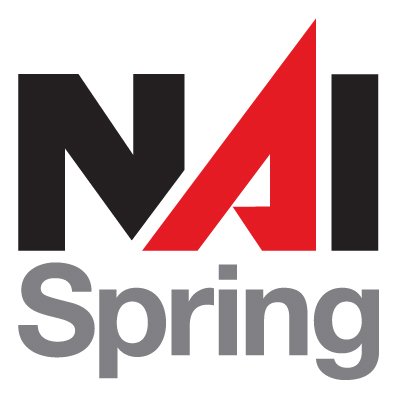July/August 2018 / Vol 8 Issue 5
Top Site Selection Criteria: Employees
By: Kelly Sober, Director of Operations at NAI Spring Commercial Realty
The season of trade shows, conferences and expos is here. These conferences provide a great opportunity to interact with upstream, midstream and downstream professionals discussing their commercial real estate needs. Discussion of site selection revolves around location, infrastructure, rail, barge, but always circles back to one of the number one criteria “Where can I find qualified employees?”
In 2011 and 2012, when the push for locations in the Utica began, site selection consisted of companies calling the local economic development office, or the local real estate brokerage and asking, “What do have you have?” There was (and still is) a limited supply of buildings in which to operate. In the early stages of the play, any location was acceptable.
We are now in 2018. Along the Ohio, West Virginia and Pennsylvania borders, lines are blurred between the Utica and Marcellus. Facilities remain in short supply. There are some very successful entrepreneurs gambling on spec buildings which are leased as soon as they break ground. Key criteria to the success of these facilities is location to the drilling and proximity to a major highway to limit travel to and from the job site.
“I have had the pleasure to speak at many conferences regarding site selection and commercial real estate” said Bryce Custer, SIOR, CCIM with NAI Spring and Ohio River Corridor, LLC. “No longer is the discussion primarily around infrastructure; highway, rail and barge. Conversation focuses on recruiting, hiring and retaining qualified employees” said Custer.
In 2010 – 2014 Stark and Carroll Counties in Ohio were a major hub of Oil & Gas activity. The Metropolitan Statistical Area (MSA) of these two counties (as of 2010 US Census) was 404,422. (Stark – 378,664 and Carroll – 28,836). Canton, Ohio was the hub of activity early on. Was it because of the proximity to the Utica play or due to the fact Canton has one of the largest populations in the Utica Shale area?
In 2017, Custer formed NAI Ohio River Corridor in conjunction with NAI Spring, broker Dan Spring in Ohio and JJ Guida Realty, broker Jamie Guida in West Virginia under the Ohio River Corridor, LLC holding company for site selection and commercial real estate services along the Ohio River in the tri-state area.
Currently, conversation revolves around the Shell Polymer Complex in Monaca, PA and patiently awaiting announcement of PTTGC in Belmont County. One, both or even more petrochemical projects will create vast opportunity along the Ohio River and surrounding counties.
According to Custer; “When speaking to groups or individuals, the number one question is “Where will we get employees?”
Let’s look at the population along the river according to the 2010 US census.
County Population County Seat
Columbiana County, Ohio107,841 Salem, OH
Jefferson County, Ohio69,709 Steubenville, OH
Belmont County, Ohio68,771 St. Clairsville, OH
Monroe County, Ohio14,642 Woodsfield, OH
Washington County, Ohio61,778 Marietta, OH
Hancock County, WV30,676New Cumberland, WV (also includes part of Weirton)
Brooke County, WV24,069Wellsburg, WV (also includes part of Weirton)
Ohio County, WV44,443Wheeling, WV
Marshall County, WV33,107Moundsville, WV
Wood County, WV86,956Parkersburg, WV
Total: 541,992
As you can see from above table; The entire population of the Ohio River Corridor from the northern counties in Ohio and West Virginia to Marietta, OH/Parkersburg WV is 541,992 spread out over approximately 150 miles of the Ohio River.
Back to the question: “Where will we get employees?” Looking at a demographics map, we can see the major population areas along the Ohio River are:
Aliquippa, PA (close to the Shell Petrochemical Complex)/Pittsburgh, PA
Steubenville, OH/Weirton, West Virginia
Wheeling/Moundsville, West Virginia
Marietta, OH/Parkersburg, WV
Sixty minutes from the Ohio River, Canton, Stark County, OH has a large population but would require completion of US-30 to make this more feasible for employees drive time. In Morgantown, WV we have a tremendous workforce with West Virginia University and no direct access to the Ohio River. “In order to utilize the Monongalia County/Morgantown WV workforce, it is critical that
I-68 be completed to connect to the Ohio River” said Custer. Custer is currently working with a delegation from West Virginia and WVU and recently completed his second trip to the White House to discuss how critical this infrastructure is to the development of the Ohio River Corridor.
Beyond just locating the available workforce pool, in order to realize true longterm success, it’s crucial that this bourgeoning industry develop a strategy to attract and engage Millennials, as well as the next generation of workers know as Gen Z (those born between 1996-2010). Statistics show these folks will make up over 75% of the workforce by the year 2030.
So how does the petrochemical industry compete for the attention of these young workers? First and foremost, it must recognize that this demographic has vastly different priorities and values then its’ predecessors. Gone are the days of toiling away for a days’ wages and the promise of a retirement check 40 years down the road. According to recent Forbes research, young workers care about a company culture that promotes work like balance, mental health, social responsibility, and entrepreneurship. These things ranked above salary as motivating factors for the Millennials and Generation Z’s. Progressive companies will recognize these changes and implement aggressive initiatives to engage and retain the up-coming workforce.
We have tremendous potential of new quality jobs along the Ohio River. It is critical that private and public partnerships work together on the infrastructure of the Ohio River Corridor to move not only product, but more importantly people to the area. Let’s get the jobs to the river, rebuild the towns and infrastructure to make these areas a great place to work, shop and raise a family. This will take a conscientious effort by everyone to bring the “Rust Belt” into the age of the “Plastic Belt”


